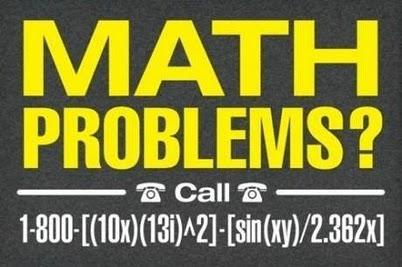Maths in the City posted this on twitter:

In order to make a number we can call, we need both of and to be integers.
Multiply out the first one:
So needs to be of the form
Now, to look at the second part!
Substituting in the expression we had for , we get
Let’s rearrange that to find in terms of and :
At this point, note that
Which is great!
Since is defined only on values in the range , and we want both and to be positive, we need
i.e.
or,
So if you have “math problems”, call any number 1-800-n-m such that .

Comments
Comments
rose82
I’ll take your word on this. If any chance of me solving, I would have tried, but forget Trig 100%, so not a chance …
Alex
Sure that the x in the last term (2.362x) is supposed to be in the denominator?
Christian Perfect
Yeah, pretty sure. Why wouldn’t it be?
I have no idea.
For the first multiplication, what happened to i?
Christian Perfect